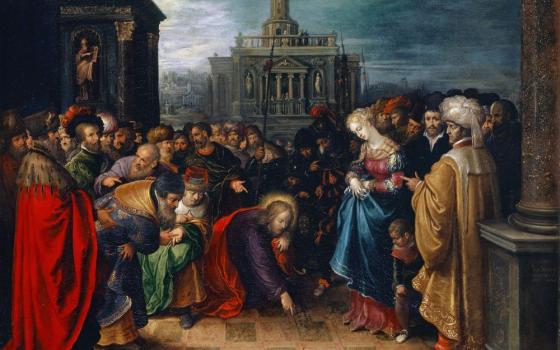
TALLAHASSEE, FLA. -- The celebration here of “Plenty Good Room,” exhibited the vigor and joy of African Americans’ song and food. St. Eugene Catholic Chapel and Student Center on the edge of Tallahassee’s Florida A&M University, a land-grant school, brought together a cross section of the community Nov. 11-13 for a gospel music workshop to feed the soul and a soul food lunch to feed the body.
The occasion marked the local celebration of November as Black Catholic History Month.
Gabe Brown, director of the Pensacola-Tallahassee diocese’s Office of Black Catholics, began a poignant presentation by singing, “Sometimes I Feel Like a Motherless Child.”
“Why should I feel like a motherless child in the church I was born in?” Brown asked, and then answered the question: Because, he said, “I don’t see or hear about me” in the Catholic church.
Brown told NCR, “The black Catholic church is seeing an exodus of young people who go to Baptist churches, where there are programs to engage them.” He was referring to the success of black congregations springing up in storefront churches, as well as megachurches in North Florida.
“They leave churches where the sermons are boring [and have] priests who don’t respond to their needs,” Brown said.
He said that he is concerned that Pensacola’s historic St. Joseph Parish, established in 1891, may close for lack of congregants. The parish at one time included St. Joseph Colored School, St. Joseph Creole School and St. Joseph Boarding School and Orphanage.
Carole Curry, a lay leader at St. Eugene, where lively liturgies attract students, related the history of black Catholicism by saying, “It was common in the early days for owners to have their slaves baptized.”
The first European explorer of Florida, Ponce de León, brought two African men with him in 1513. Later, Pedro Menéndez imported 500 enslaved Africans to build St. Augustine. In 1693 Spain offered freedom to slaves who converted to Catholicism, and a community of freed black converts lived in the St. Augustine area until 1763.
In St. Augustine, not long after the Civil War, the Sisters of St. Joseph established a school for freed slaves in 1867. As late as 1916, three of the sisters in St. Augustine were arrested for violating a 1913 Florida law that forbade whites to teach in black schools. Within three decades, however, schools to educate black children spread throughout the state.
A smattering of parishes across the country -- like St. Francis of Assisi in Milwaukee, St. Martin de Porres in Cheek, Texas, and St. Elizabeth Ann Seton in Ontario, Calif. -- had celebrations to mark the month set aside for Black Catholic heritage.
According to the website of the National Black Catholic Congress, the National Black Catholic Clergy Caucus of the United States designated November as Black Catholic History Month in 1990 “to celebrate the long history and proud heritage of black Catholics. Two commemorative dates fall within this month, St. Augustine’s birthday (Nov. 13) and St. Martin de Porres’ feast day (Nov. 3).”
[Judy Gross writes for NCR from Tallahassee.]



